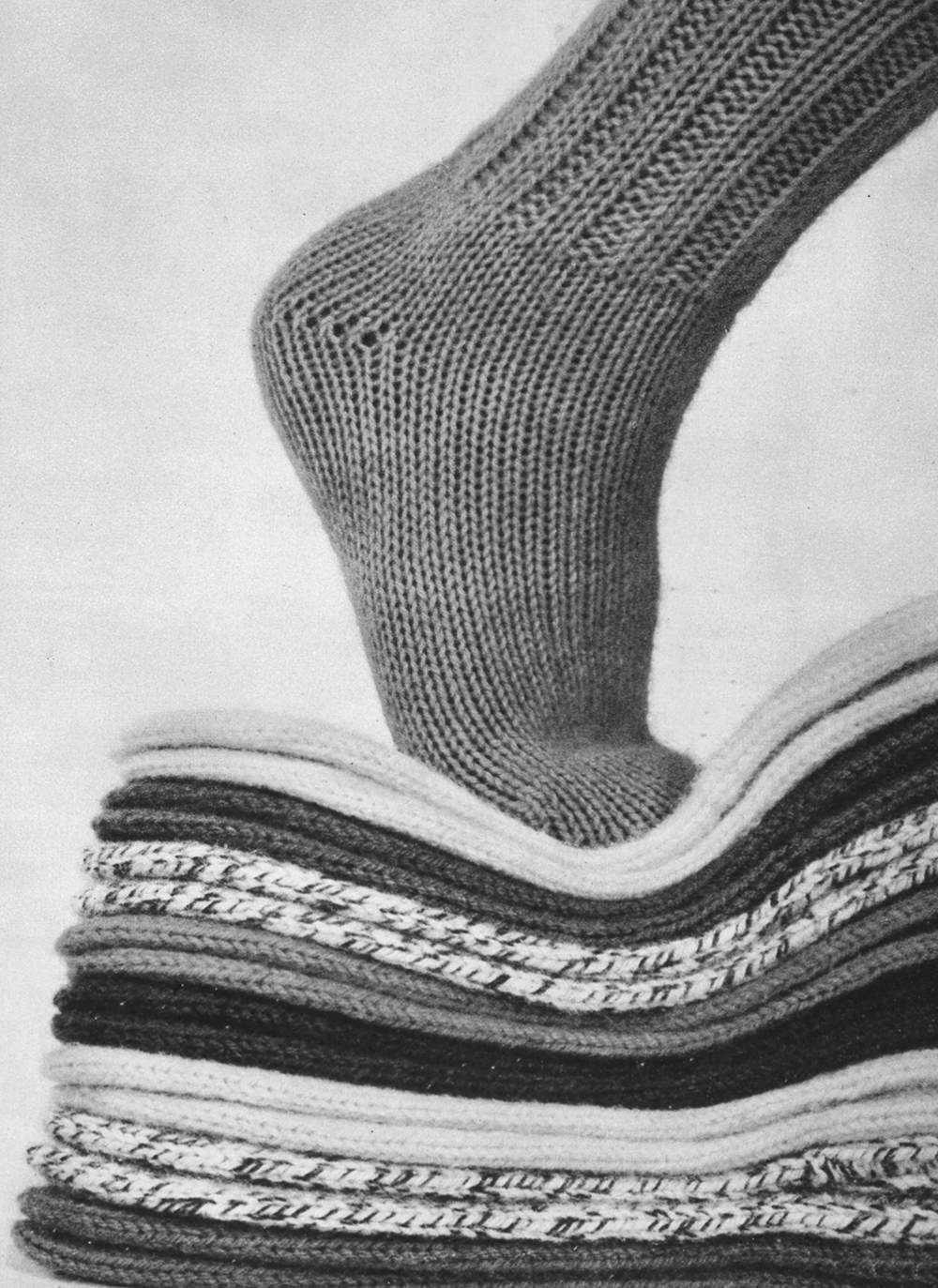 Hit item that made
Hit item that made
Hit item that made
Hit item that made
歴史に残るヒットアイテム
Hit item that madeスポーツ製品の中でも、代表的なアイテムの1つに登山用ソックスがある。ゴールドウインのこだわりが詰まった、歴史に残るヒットアイテムだ。丈夫さと暖かさを兼ね備えた登山用ソックスは評判が評判を呼んだ。従来のウール素材を使用した国産ソックスはすでに存在していたが、すぐに穴があいてしまうという欠点があり、当時は輸入品を履く人がほとんどだった。そこで西田は社員たちと国産品と輸入品の違いをとことん分析し、原糸に着目。国産の原糸と海外で生産された原糸には明らかな違いがあることに気づいたのだ。研究を進め、登山に向くソックスは寒い気候で育った羊毛で作られたものだという結果にたどり着く。そこで海抜2000mの地帯に住むイギリスのシェットランドの原毛を仕入れ、糸作りから始めた。背中と足の太い毛は靴下に、腹部の毛はセーターに使用し製品化した。原毛の産地にこだわり、耐久性や機能性、そして何より履き心地の良さを追求した究極のニットアイテムの誕生だった。価格は上がるがその分長く履けるので、決して高くない。西田は当時の評判について「津澤メリヤスのモノ作りの姿勢が認められた証だった」と振り返っている。そしてものづくりのこだわりや探究心は西田を海外へと導く。世界を相手に戦う日本人選手を支えるスポーツメーカーこそ、世界の技術を見て学ばなければいけないと考え、西田は1964年、インスブルック冬季オリンピックの視察にヨーロッパへと渡る。1カ月という歳月をかけ、イタリアからドイツ、イギリス、スイス、フランス、ノルウェー、そしてデンマークを回った。そこで見たヨーロッパと日本の技術に、大きな衝撃を受けた。ウエアのフォルムの機能的な美しさを見て、それを生み出す高度な裁断技術を習得する必要性を痛感した。中でも記憶に強く残っていたのがフランス・フザルプ社のスキーウエアだったという。
Among sports products, one of GOLDWIN’s representative items is climbing socks. Filled with uncompromising quality of GOLDWIN, it is a hit item that made the history of the company. The reputation of the climbing socks combining durability and warmth spread widely. Although domestic socks made of traditional wool were already in the market at that time, they had a drawback of generating holes fast, so most people wore imported goods. Nishida took a close look at the differences between domestic products and imported products with his employees, and took particular note on the original yarn. He noticed that there was a clear difference between the domestic yarns and the yarns produced overseas. He continued his research and arrived at the conclusion that the socks suitable for mountain climbing were made of wool shorn some sheep which was raised in a cold climate. He purchased raw wool from Shetland sheep, which was raised in the region 2000 meters above sea level in the United Kingdom, and started with yarn making. The thick hair on the back and legs was used for socks, and the hair on the abdomen was used for sweaters. It was the birth of the ultimate knit item focusing on the origin of raw wool and maximizing durability, functionality, and more than anything, the comfort of wearing. Even though the price was higher, durability was higher, so the actual cost was never higher. Nishida looked back on the reputation at the time, “It was a testimony to the approval of Tsuzawa Knit Fabric Manufacturer’s approach to manufacturing.” Then, his commitment and inquisitive mind on manufacturing lead Nishida overseas. Nishida thought that sport manufacturers supporting Japanese athletes, who compete with the world, must see and study the technology of the world, so he traveled to Europe in 1964 to see the Innsbruck Winter Olympic Games. Spending one month, he traveled from Italy to Germany, United Kingdom, Switzerland, France, Norway, and Denmark. During this time, he was stunned by a large technological gap between Europe and Japan. Looking at the functional beauty of the form of the wear, he was keenly aware of the necessity of acquiring advanced cutting techniques to create it. He later reflected that it was a ski wear of Fusalp in France that was most unforgettable.